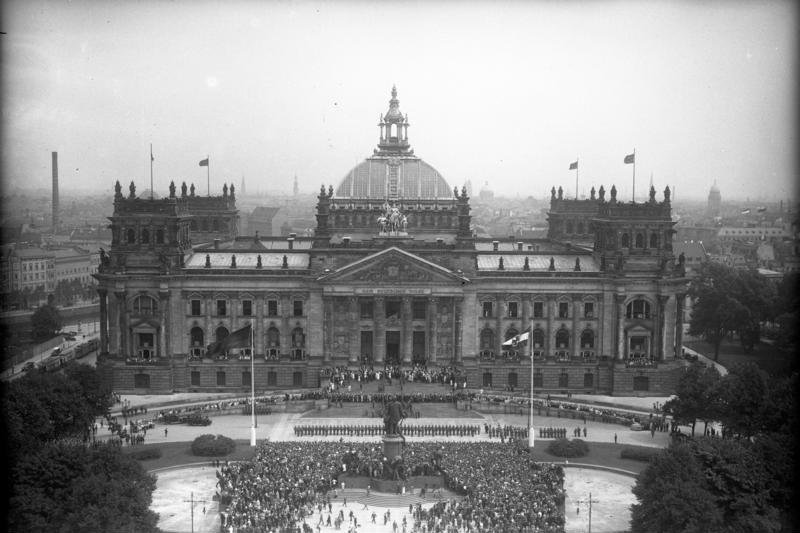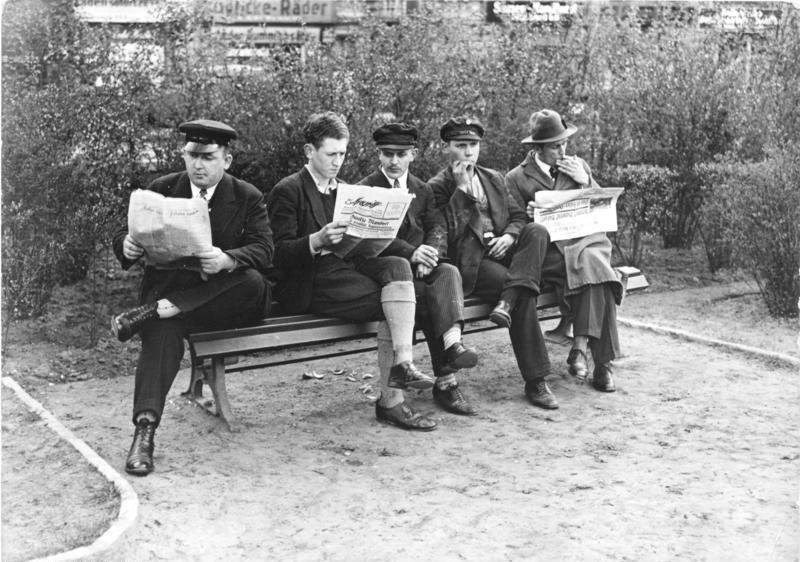In the wake of World War I, a devastated Germany sought hope amid chaos. Out of the ashes of empire emerged the Weimar Republic, a fragile democracy born not in triumph, but in trauma. For nearly 14 years, Germany oscillated between promise and peril. How did this bold experiment in democracy unravel, and what lessons does it hold for today?
From Empire to Republic (1918–1919)
- Collapse of the Kaiserreich: By November 1918, Germany’s monarchy fell as Kaiser Wilhelm II abdicated.
- A revolution born of necessity: Citizens, worn out by war and shortages, were desperate for stability.
- Birth of the Weimar Republic: On November 9, 1918, moderate Social Democrats declared a republic—a hopeful, yet delicate new order.
- Weimar’s shaky foundations: The Treaty of Versailles and punitive reparations left the Republic economically and psychologically wounded.

Chaos and Extremes (1919–1923)
- Street violence and political polarization: Clashes erupted between Communists and right-wing Freikorps.
- Spartacist Uprising and suppression: Rosa Luxemburg and Karl Liebknecht were brutally executed, deepening social distrust.
- Kapp Putsch and worker resistance: A right-wing coup faltered only after nationwide general strikes.
- Cultural resentment festers: Assassinations, extremist rhetoric, and judicial bias eroded civic trust.
A Golden Moment (1924–1929)
- Stabilization under international aid: The Dawes Plan restructured reparations, and floods of U.S. loans sparked economic recovery.
- Weimar Renaissance: With stronger economy came cultural renewal—Berlin thrived as a hub for art, music, cabaret, architecture, and intellectual life.
- Hidden fractures: Beneath the surface, old wounds lingered. Extremist sentiment remained dormant but present.

Depression and Despair (1929–1932)
- Global crash hits home: The Great Depression shattered the fragile economic gains of the Weimar era.
- Bank failures and mass unemployment: By 1932, nearly one in three Germans was jobless.
- Turn to extremism: Both Communists and Nazis gained momentum, trading on despair with oversimplified promises.
- Crisis of confidence: Weak parliamentary coalitions fractured; democracy lost its legitimacy.

Hitler’s Rise (1932–1933)
- Authoritarian pitch: Hitler promised national renewal, playing on resentment towards the Treaty of Versailles and socialism.
- Marching Brownshirts and propaganda: The Nazi Party used organized violence and messaging to intimidate and persuade.
- Fragile democratic channels: Despite lacking a majority, Hitler was appointed Chancellor on January 30, 1933.
- Erosion of democracy by law: The Reichstag Fire and Enabling Act allowed Hitler to dismantle democratic safeguards.
Lessons for Today: Why Weimar Still Matters
The story of the Weimar Republic shows how democracy can die not by coup, but through incremental breakdown:
- With fear, citizens abandon liberty for order.
- Division poisons trust.
- Extremists exploit economic and cultural vulnerabilities.
This isn’t just academic—it’s a mirror. Our democracies might not fall by force, but by erosion.
📚 Sources & Image Attributions
All media reused under Creative Commons licenses or in the public domain. Some images contain historical Nazi symbolism and are used strictly for educational purposes.
Some images have been cropped, converted to black & white, or had a vintage video filter applied to fit the video’s aesthetic.
🎞️ Creative Commons (CC BY / CC BY-SA)
Bundesarchiv (CC BY-SA 3.0)
- Hitler, Göring and Hanfstaengl in Berlin
- Unemployed SA men in Berlin
- Bank run in Berlin
- Unveiling of Rathenau memorial plaque
- Hermann Ehrhardt during Kapp Putsch
- Marinebrigade Erhardt in Berlin
- November Revolution at Brandenburg Gate
- Philipp Scheidemann
- Reichstag constitution celebration
- Day of Potsdam, Hitler and Hindenburg
- Constitution celebration in the Reichstag
- Hitler speaking in Reichstag
- NSDAP deputies in Reichstag
CC BY-SA 4.0
- Reichstag interior fire damage 1933
- England objects to Versailles Treaty, 1919
- Nazi propaganda poster, National Museum Šabac
- WW2 German occupation of Norway
- Hitler Youth building, boy at switchboard (Denmark)
- Hitler Youth HQ press office (Denmark)
CC BY 3.0
CC BY 2.0
- Nazi Party Election Poster 1932 (Münchner Stadtmuseum)
- Berlin State Opera and St. Hedwig’s Cathedral
🏛️ Public Domain Images (no copyright)
These images are in the public domain in their source country and the United States. They may be freely reused without permission.
- Allied Experts in Berlin
- Walther Rathenau
- Freikorps Assault with Wex Flamethrower
- Guardsmen fighting Spartacists Berlin 1919
- Rosa Luxemburg (cropped)
- Karl Liebknecht
- Food Queues, Hanover 1918
- Fighting during Berlin Uprising 1919
- Armed Freikorps in Munich street 1919
- Munich Revolution 1919
- Germany under Allied Occupation
- Scheidemann proclaiming the Republic
- Soldiers Marching into Battle, WWI
- Eastern Poland Farmhouse (1941)
- Children of migrant cotton field workers, Oklahoma
- Nazi rally in Berlin, crowd before Communist building
- Potato delivery Zurich
📜 License Summary
If you own any of this material and would like it removed or credited differently, contact me here.
CC BY / CC BY-SA: Attribution required. Edits allowed.
Public Domain: No attribution legally required, but sources are listed for transparency.
Some materials have been modified for visual coherence.
